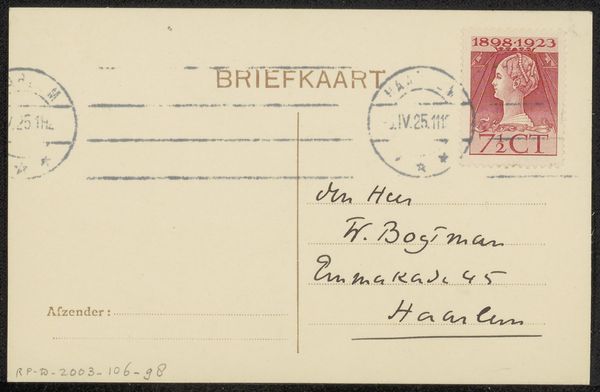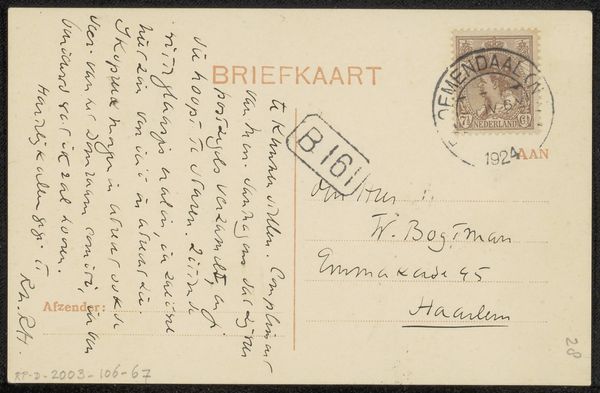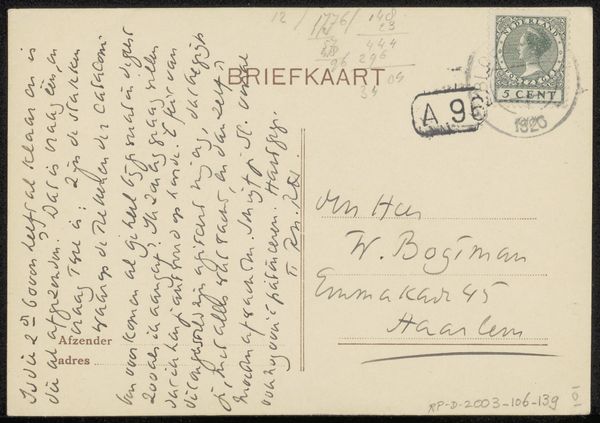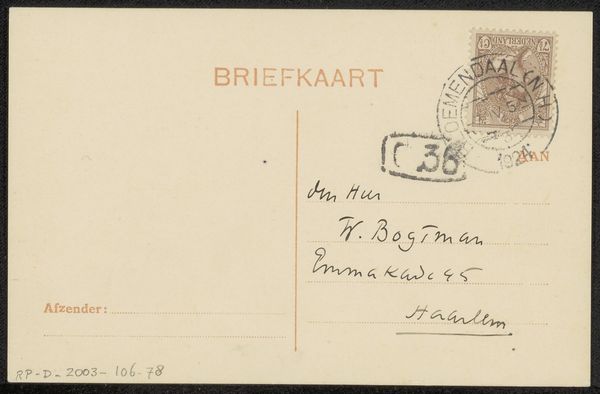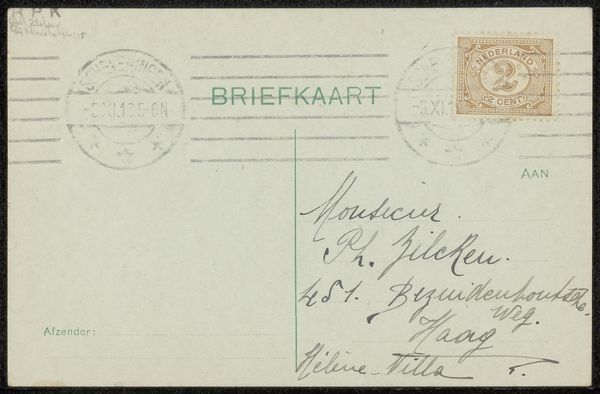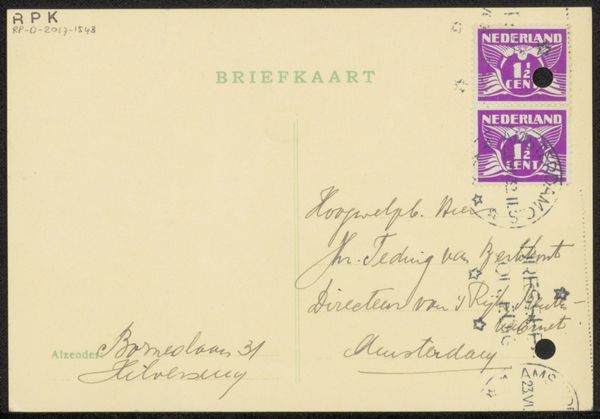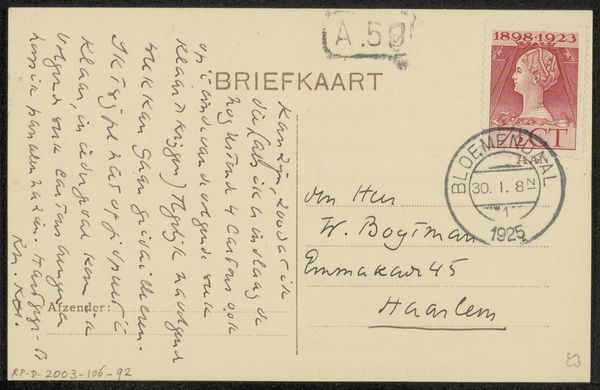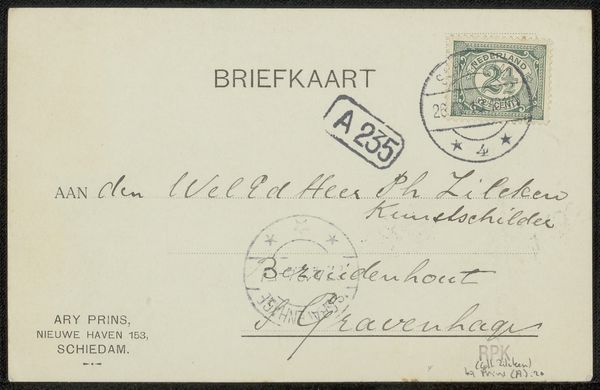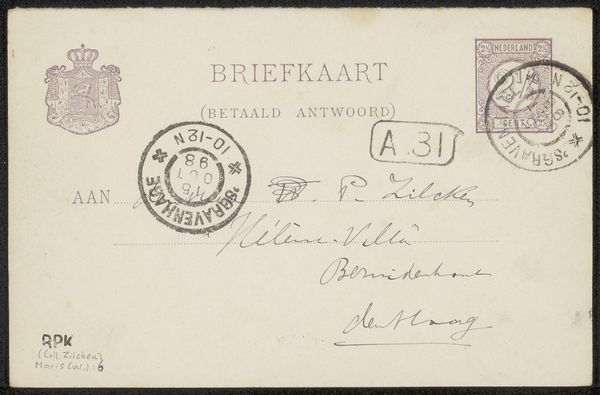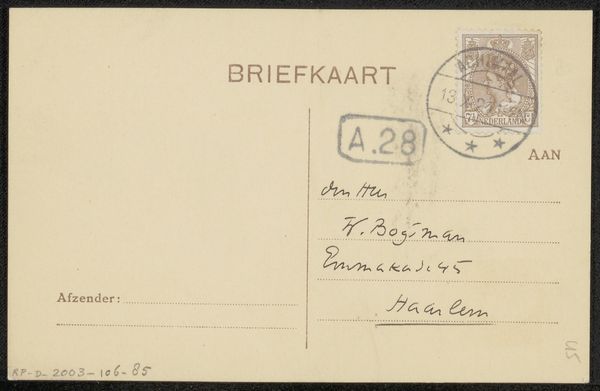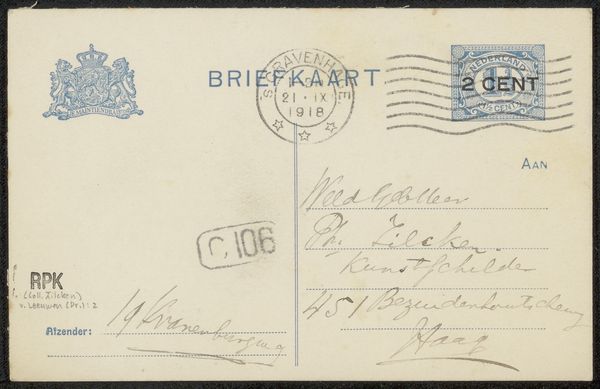
drawing, paper, ink, pen
#
drawing
#
pen sketch
#
paper
#
ink
#
pen-ink sketch
#
pen work
#
pen
Copyright: Rijks Museum: Open Domain
Curator: We're looking at "Briefkaart aan Willem Bogtman," a pen and ink drawing on paper, possibly created between 1926 and 1929 by Richard Nicolaüs Roland Holst. It's currently held in the Rijksmuseum. Editor: Immediately, I'm struck by its directness. The materials speak of simple communication, everyday labor even—pen on paper, sending thoughts, which I imagine most artists probably engage in. It isn't a grand statement; it's functional. Curator: Absolutely. The medium lends itself to an immediate, almost impulsive feel. What do you see inscribed in the script itself, do you observe the mood of the card in it's script? Editor: The handwriting itself seems purposeful and measured. There is clarity and purpose in communication, using paper and ink in a formal transaction: letter, seal, and message, even postmark. It seems carefully designed to achieve correspondence across space and time. The postal system and ink on paper facilitate something simple and concrete to solidify relationship and purpose. Curator: Holst was deeply involved in the Arts and Crafts movement, which itself explored themes of spirituality and social justice. His works were often laden with allegory. How might these convictions seep into his own personal letters? Editor: Perhaps in that attention to legibility, the neat address and sender locations. This care might be an attempt to instill some of the movement’s ethics of careful design and clear intention. What about the symbolic role of sending an image to connect across space, instead of, say, an artistic one? Curator: In the same vein of clarity and legibility, I would expect that there may be deeper emotional, intellectual, and ethical considerations in play. Holst may not only care about getting his ideas understood by W. Bogtman in this brief postcard, but it may also extend to the preservation of collective ideas between those that remain within the context of their relationship. It also offers insights into a cultural sphere. Editor: Interesting, because while such "everyday" material bears its function on its surface, its simple physical making gives an extraordinary look into the past in just one brief glance, too. Curator: Ultimately, looking at this postcard makes you reflect on the social rituals it documents as a mode of connecting people and preserving personal experience beyond simple materiality. It’s both mundane and profound, like memory itself.
Comments
No comments
Be the first to comment and join the conversation on the ultimate creative platform.
